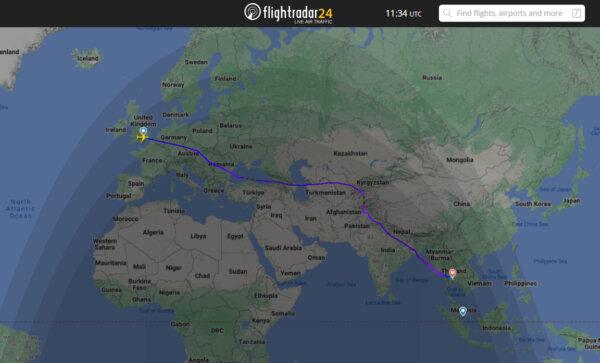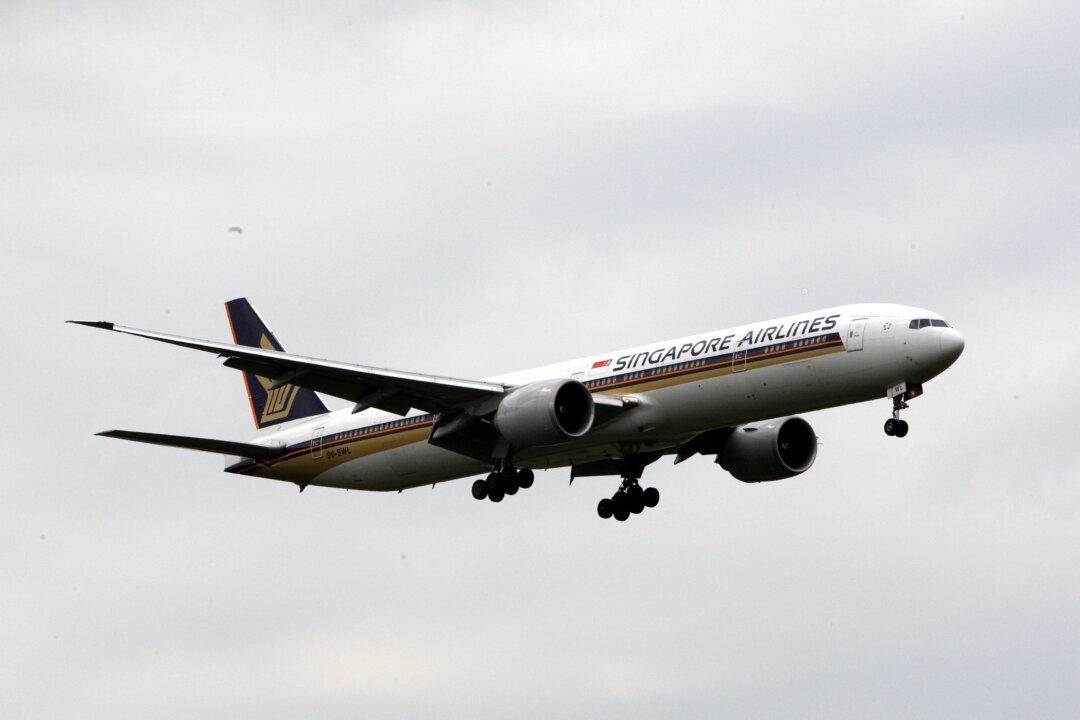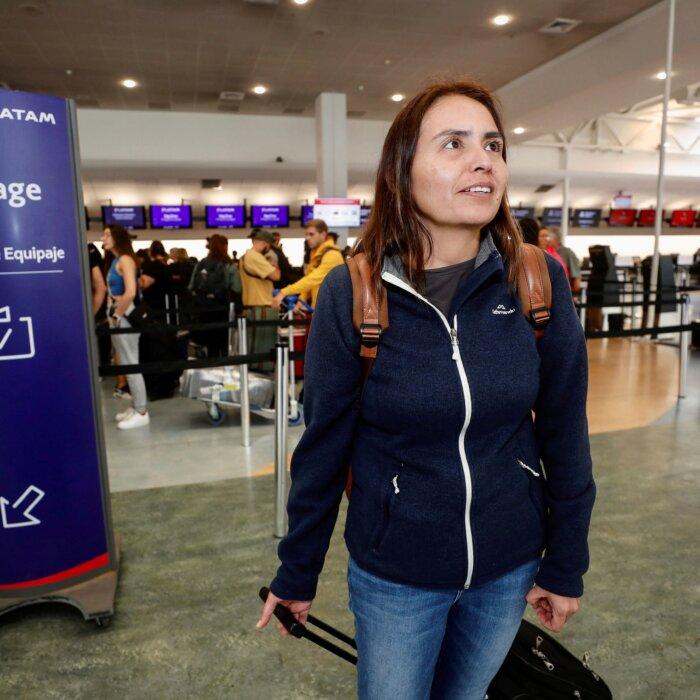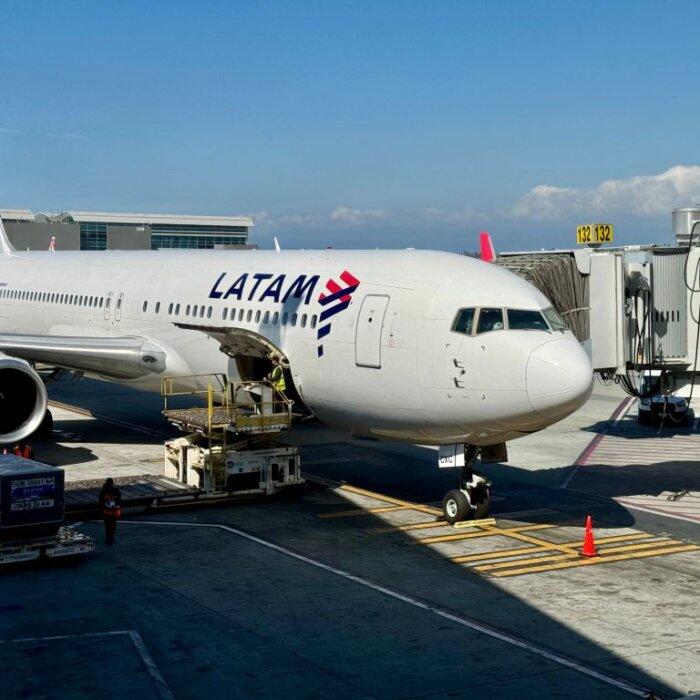A 73-year-old British passenger has died of a suspected heart attack and seven others were seriously injured when a plane from London to Singapore hit “severe turbulence” over the Bay of Bengal.
The Singapore Airlines Boeing 777-300ER was forced to divert to Suvarnabhumi airport in the Thai capital, Bangkok.
A spokesman for Suvarnabhumi Airport said the passenger who died was believed to have suffered a heart attack.
He said seven other people were seriously injured and dozens suffered minor injuries.
One passenger on board Flight SQ321, which had flown out of London’s Heathrow Airport, said it suffered a “dramatic drop” mid-air and because most people on board were not wearing a seatbelt at that point many were “launched immediately into the ceiling.”
One passenger, Dzafran Azmir, 28, told Reuters: “Suddenly the aircraft starts tilting up and there was shaking so I started bracing for what was happening, and very suddenly there was a very dramatic drop, so everyone seated and not wearing a seatbelt was launched immediately into the ceiling.”
“Some people hit their heads on the baggage cabins overhead and dented it, they hit the places where lights and masks are and broke straight through it,” he added.
Airline Offers ‘Deepest Condolences’
“Singapore Airlines offers its deepest condolences to the family of the deceased. Our priority is to provide all possible assistance to all passengers and crew on board the aircraft,” the company added.The airline said, “We are working with the local authorities in Thailand to provide the necessary medical assistance and sending a team to Bangkok to provide any additional assistance needed.”
Images posted on social media showed food, cutlery, and other debris strewn on the floor of the cabin in the aftermath of the incident and one flight attendant with a bloodied nose.
The plane, which had 211 passengers and 18 crew on board, took off from Heathrow at 10:17 p.m. on Monday and landed at Bangkok at 3:45 p.m. local time.
Tracking data published by FlightRadar24 showed the plane dropped suddenly by 6,000 feet, from its cruising altitude of 31,000 feet.
Singapore’s minister for transport Chee Hong Tat posted a statement on Facebook in which he said, “I am deeply saddened to learn about the incident onboard Singapore Airlines flight SQ321 from London Heathrow to Singapore.”
He said several organisations were “providing support to the affected passengers and their families.”
In June 2023 two British Airways cabin crew suffered broken legs when a flight from Singapore to Heathrow was affected by turbulence over the Bay of Bengal.
A report by the Air Accidents Investigation Branch said “unsecured cabin crew were thrown around in the cabin.”

‘Fatalities Are Rare’
Aviation consultant John Strickland said turbulence was a fact of life for airliners, but he said “fatalities are rare.”He said: “Exposure is greater in different parts of the world. The South Atlantic, Africa, and the Bay of Bengal are all places that spring to mind where there’s a greater incidence.”
In December 1997 a United Airlines flight from Tokyo to Hawaii hit clean-air turbulence and plummeted thousands of feet, killing one passenger and severely injuring 18 others.
Joji Waites, head of flight safety at the British Airline Pilots Association, said, “Aircraft are designed and certificated to withstand flight in severe turbulence, and pilots are trained in how to anticipate potential turbulence encounters based on weather forecasts and the aircraft’s onboard technology.”
“Route weather forecasts provide a general prediction of when turbulence is likely to occur, but they often cannot reflect actual conditions in sufficient detail to enable pilots to avoid specific instances of turbulence,” he added.
“It is important, therefore, for aircraft occupants to have their seatbelts fastened while seated should any unexpected encounters occur and comply promptly with ‘fasten seat belt’ signs when asked to do so,” said Mr. Waites.







